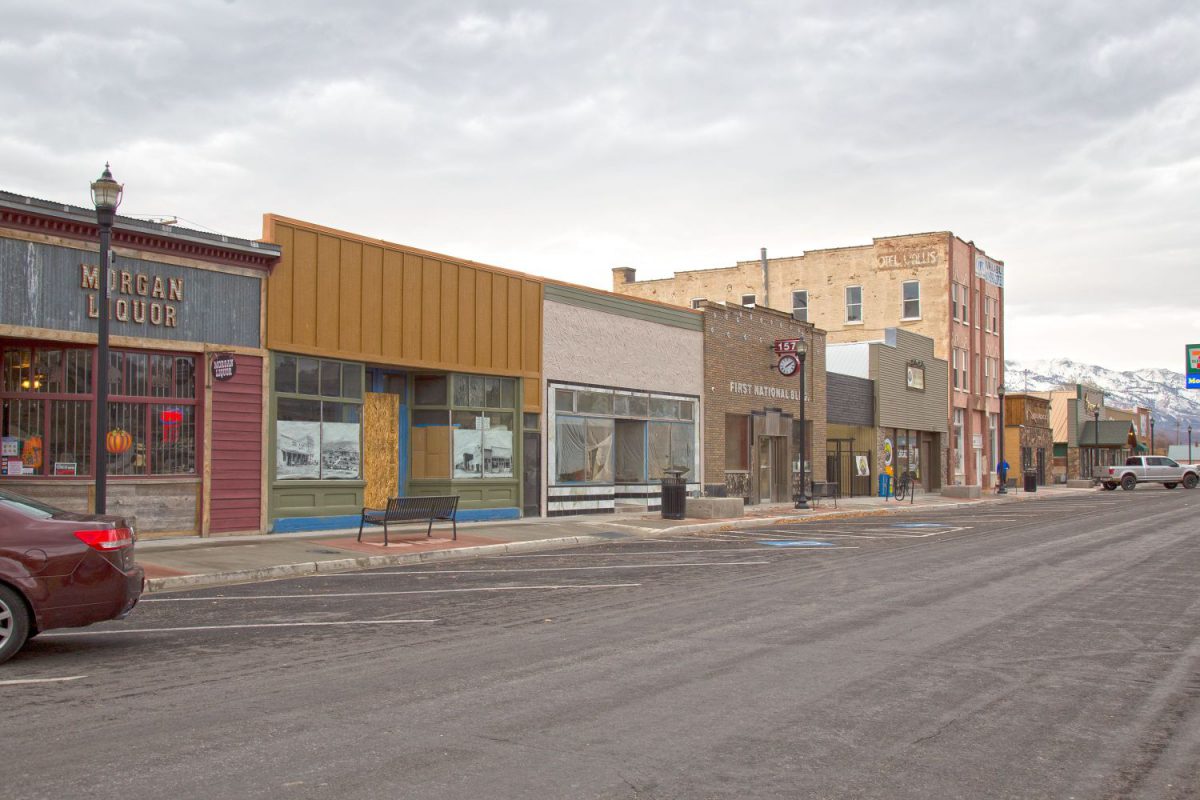The Morgan Historic District, in Morgan, Morgan County, comprises 480 buildings, structures and sites. The Morgan Historic District has local significance under Criterion A in the area of Transportation for its unique single-sided commercial street which directly faces the transcontinental railroad route as well as Morgan’s distinction as the most significant established rural town located directly along the transcontinental railroad route in Utah. The Morgan Historic District also has local significance under Criterion A in the area of Community Planning and Development for its unique founding and design which was greatly informed by the course of the Weber River through Morgan Valley. Morgan City is composed two distinct settlements, one on each side of the Weber River as well as the commercial/railroad district along the north side of the Weber River. Although the two settlements incorporated as Morgan City, they retained their independent grid alignments which are still reflected in current-day Morgan City. The Morgan Historic District is also significant under Criterion C in the area of Architecture for its intact concentration of historic buildings which exhibit a high level of integrity and craftsmanship. The pre-1900 picturesque residential buildings constructed of locally fired red brick are a particularly impressive feature within the district. The historic and architectural resources of the district are eligible within the following historical themes: “Founding, Commercial and Civic Development of Morgan;” “Agriculture, Commercial and Community Development;” “Agricultural Recession and the Decline of Commercial Street;” “World War II, Commuter Economy and Reclamation Projects;” and “Interstate 84, Recreation and the Browning Arms Company.”
The period of significance begins in 1870, two years after Morgan was incorporated and the transcontinental railroad was extended directly through Morgan. The Richard Fry House located at 126 West Young Street [photograph 5] and another central-passage residence constructed in 1870 are the earliest remaining contributing buildings. [1] The period of significance ends in 1976, when the Browning Arms Company was acquired by Fabrique Nationale, a Belgian Company which removed local ownership and most management operations of the company from Morgan, Utah. With the sale of Browning Arms Company in 1976, construction declined by more than half from fifty-five buildings in the decade prior to the sale to twenty-seven in the decade following the sale. Although the end date is outside the standard 50-year cutoff for eligibility, 1976 represents a less-arbitrary cutoff than 1971. Despite some late twentieth and early twenty-first century intrusions, the Morgan Historic District represents well physical history of Morgan, Utah.

